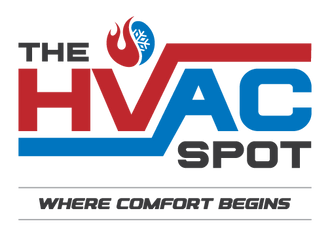Preventive Maintenance Pays Off
Your HVAC system works hard—cooling you off in the summer, keeping you warm in the winter, and running year-round to keep your indoor air just right. But like any major appliance, it needs regular care to stay efficient and reliable.
This simple checklist walks you through what to check, clean, or schedule throughout the year, whether you're handy with a toolkit or prefer to call in the pros. We’ve even included a skill level tag for each item so you know what you can handle yourself and when to bring in a professional.
1. Change or Clean Air Filters (Monthly or Quarterly)
Clean filters keep air flowing freely and reduce strain on your system. For central HVAC systems, replace disposable filters every 1–3 months. If you have a ductless mini-split, gently remove and rinse the indoor filters with water, then let them dry before reinstalling.
SKILL LEVEL: DIY
2. Clear Debris from Outdoor Units (Monthly)
Leaves, grass clippings, snow, and even rogue weeds can block airflow and reduce performance. Keep at least 2–3 feet of clearance around your outdoor condenser to ensure proper ventilation.
SKILL LEVEL: DIY
3. Check Thermostat Settings (Seasonally)
Before the seasons change, make sure your thermostat is reading accurately and switching between heating and cooling without issue. This is a good time to upgrade to a programmable or smart thermostat if you're still using a manual one.
SKILL LEVEL: DIY
4. Inspect and Clean Evaporator & Condenser Coils (Spring & Fall)
Dirty coils can make your system work harder than necessary. For light dust or buildup, you can carefully spray them down with a coil-safe cleaner. For anything more serious, schedule a professional cleaning.
SKILL LEVEL: DIY / PRO
5. Clear Condensate Drain Lines (Spring & Fall)
Clogged drain lines can cause water leaks and even system shutdowns. While some homeowners use a wet-dry vac or vinegar flush to clear basic blockages, you might feel more comfortable calling the pros.
SKILL LEVEL: PRO
6. Inspect Electrical Connections and Controls (Annually)
This is not the place to experiment. A licensed technician should test voltage, tighten connections, and inspect electrical components during an annual tune-up.
SKILL LEVEL: PRO
7. Check Refrigerant Lines for Leaks or Damage (Annually)
Low refrigerant leads to poor performance and higher energy bills. You can check for obvious signs like ice buildup or frayed insulation, but diagnosing or repairing a leak requires specialized tools and EPA certification.
SKILL LEVEL: DIY / PRO
8. Lubricate Moving Parts (Annually)
While most modern systems have sealed motors that don’t require lubrication, some older units still need it. If you hear grinding or squealing, it may be time to call in a tech.
SKILL LEVEL: PRO
9. Monitor System Start-Up and Shutdown (Seasonally)
Pay attention to how your system starts and stops. Odd noises, clicking, or delays can be early warning signs of trouble.
SKILL LEVEL: DIY
10. Schedule a Professional Tune-Up (Twice a Year)
Even if everything seems to be working fine, preventive maintenance by a certified HVAC technician can catch problems early, improve efficiency, and help maintain your warranty.
SKILL LEVEL: PRO
Stay Ahead of Repairs with Simple Habits
Preventive maintenance doesn’t have to be overwhelming—and it doesn’t all fall on your shoulders. Knowing what you can do yourself (and when to call in a professional) helps you keep your system running better, longer, and more efficiently.
Want this sent to you as a FREE printable PDF?
Sign up for our newsletter and we'll email you a link to download this checklist as a printable PDF to use year after year!

